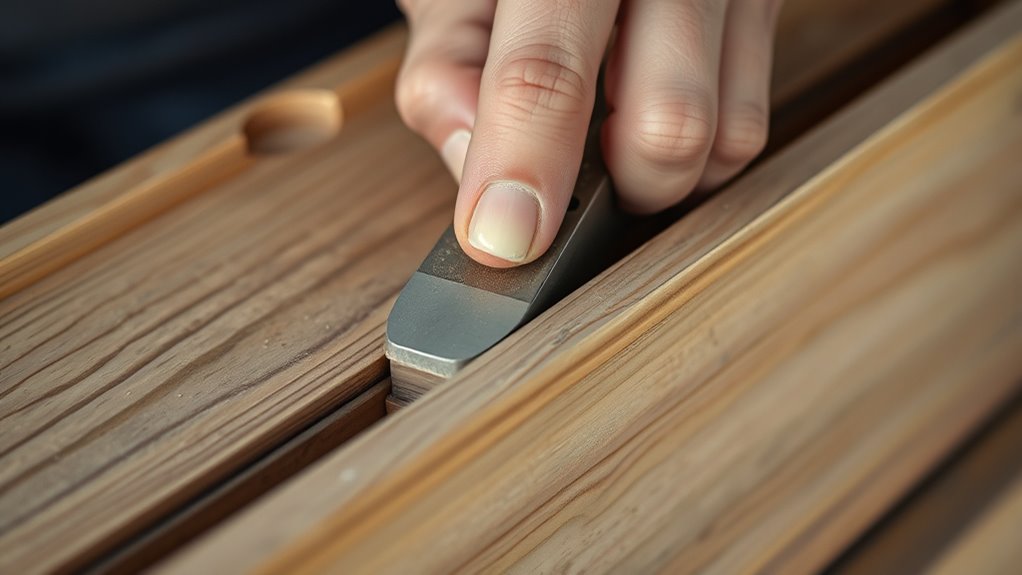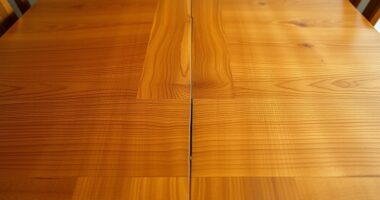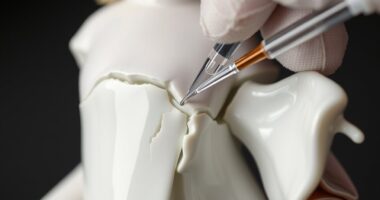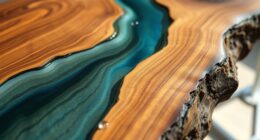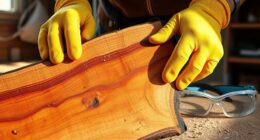To fix sticking drawers permanently using the wax-and-plane method, start by removing the drawer and inspecting the contact surfaces for rough spots or uneven edges. Smooth these areas with a plane or fine sandpaper to reduce friction. Then, apply a generous layer of wax along the sides and edges to guarantee a slippery surface. Reinstall the drawer and enjoy smoother operation. For more effective results, you can combine these steps with hinge and slide adjustments to prevent future sticking.
Key Takeaways
- Remove the drawer and inspect rough or uneven contact surfaces on sides and bottom.
- Smooth out rough spots or burrs with a plane or fine sandpaper to reduce friction.
- Reapply a layer of wax on all contact points after sanding for enhanced lubrication.
- Check and tighten hinges and slides, adjusting misaligned components for proper alignment.
- Test drawer movement, reapply wax if needed, and ensure smooth, effortless operation permanently.
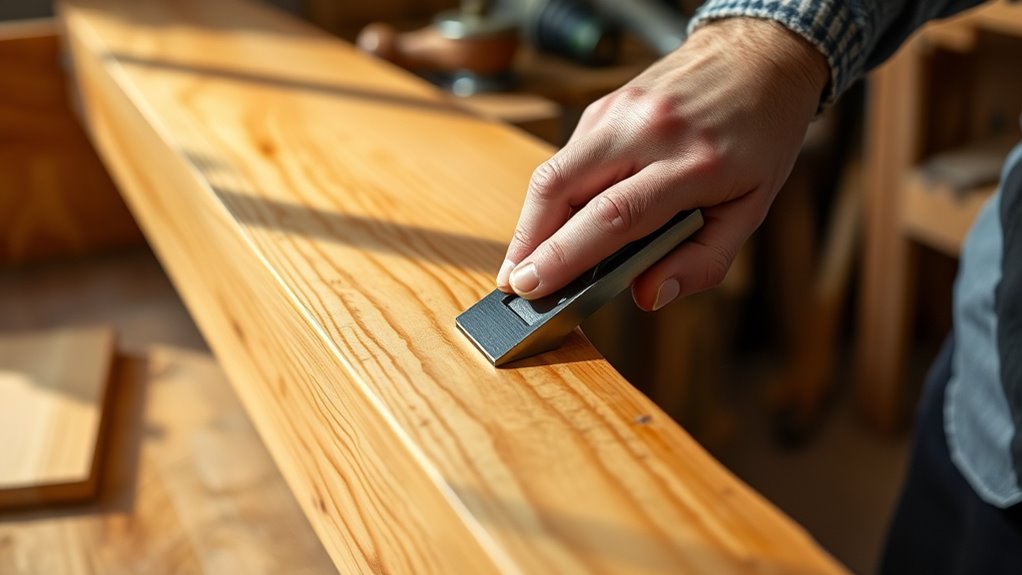
If your drawers keep sticking, addressing the problem promptly can save you frustration and prevent further damage. Often, stubborn drawers are caused by friction that can be easily reduced with proper drawer lubrication and hinge adjustment. The wax-and-plane method offers a simple, effective way to fix sticking drawers permanently by smoothing out rough areas and ensuring smooth movement. Start by removing the drawer from its slot, so you can work on it comfortably. Examine the sides and bottom for any rough spots or uneven surfaces. These imperfections cause increased friction, making the drawer hard to open or close smoothly. Applying wax to the contact surfaces reduces friction, acting as a lubricant that allows the drawer to glide effortlessly.
Begin by gently cleaning the edges and contact points with a dry cloth to remove dust and debris. Then, rub a bar of paraffin wax or a dedicated drawer wax along the sides and edges that come into contact with the cabinet. The wax creates a smooth, lubricated surface that minimizes sticking. If you notice that the drawer still sticks, it might be due to misaligned hinges or worn-out slides. This is where hinge adjustment comes into play. Check the alignment of the hinges and the slides; if they’re loose or out of alignment, tighten or adjust them accordingly. Proper hinge adjustment ensures the drawer hangs evenly and moves smoothly along its tracks.
Sometimes, the drawer’s runners or guides may be warped or misaligned, causing sticking. In such cases, you can use a plane or sanding block to carefully smooth out any uneven edges or rough spots on the sides or runners. Lightly sanding these areas with fine-grit sandpaper or a small hand plane removes splinters or burrs that increase friction. After smoothing, reapply wax to these freshly sanded surfaces for ideal lubrication. This process not only fixes the current sticking issue but also prevents future problems by ensuring the contact surfaces are smooth and well-lubricated. Additionally, understanding vibrational alignment can help ensure your furniture remains in good condition and functions smoothly over time.
Frequently Asked Questions
Can I Use This Method on Plastic or Metal Drawers?
You might wonder if you can use the wax-and-plane method on plastic or metal drawers. While it’s effective for wooden drawers, plastic compatibility is limited because the wax may not adhere well or could cause damage. For metal drawers, consider metal considerations like scratching or warping. It’s best to use specialized lubricants or fixes suited for plastic or metal to guarantee a long-lasting, smooth operation without risking damage.
How Often Should I Repeat the Wax-And-Plane Process?
You should repeat the wax-and-plane process as needed, typically every few months, depending on how often you use the drawers. Regular drawer lubrication is essential for smooth operation, and maintaining your furniture prevents sticking issues from worsening. Keep an eye on how easily the drawers slide; if they start sticking again, a quick reapplication of wax and light planing will restore smoothness, ensuring your furniture stays well-maintained.
Will This Method Damage the Drawer Over Time?
Imagine your drawer as a delicate boat sailing smoothly. You wonder if this wax and plane method might wear it down over time. With proper drawer maintenance, it’s unlikely to damage your furniture’s longevity. Just avoid overdoing it, and your drawer will glide effortlessly without damage. Think of it as nurturing your boat’s hull—gentle care ensures many more voyages, keeping your furniture functional and beautiful for years to come.
Is This Technique Suitable for Antique or Vintage Furniture?
You might wonder if this technique suits antique preservation or vintage restoration. It’s generally not recommended for delicate or valuable antiques, as it can affect the finish or patina. For vintage restoration, it’s a practical fix that helps drawers glide smoothly without damage. However, always test in a hidden area first, and consider consulting a professional for antique preservation to guarantee you don’t compromise the piece’s value or integrity.
Are There Alternative Solutions for Extremely Stubborn Drawers?
For extremely stubborn drawers, you can try alternative solutions like thorough drawer maintenance, which includes cleaning and tightening loose parts. Applying hinge lubrication can also reduce friction that causes sticking. You might also consider sanding the sides slightly to loosen fit or replacing worn slides. These methods can be effective without risking damage to vintage furniture, ensuring smoother operation and longer-lasting drawers.
Conclusion
By applying the wax-and-plane method, you can fix sticking drawers permanently, saving time and frustration. Did you know that over 60% of homeowners experience drawer issues annually? With this simple technique, you’ll prevent future sticking and keep your furniture functioning smoothly. It’s an easy, cost-effective fix that lasts. So, next time your drawers stick, remember this method—it’s a quick solution that truly works and can save you from costly repairs down the line.
